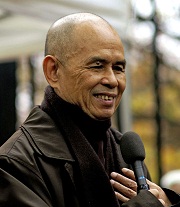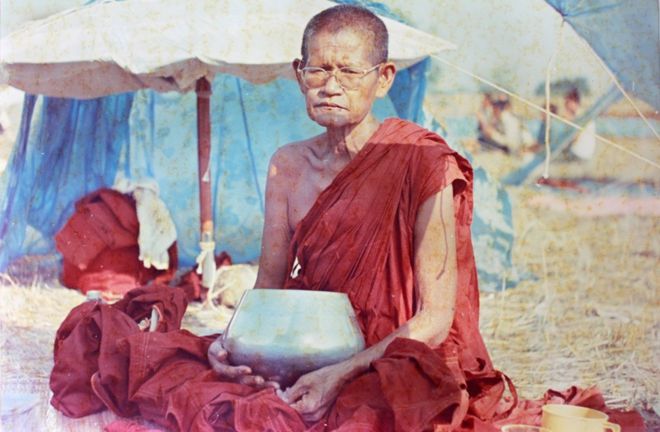by Thomas Geyer, QC Times, Apr 2, 2016
Davenport, CA (USA) -- It was 50 years ago that the Rev. Martin Luther King Jr. was awarded the Pacem in Terris Award in Davenport.
 On Saturday, King’s friend, the Venerable Thich Nhat Hanh, founder of Socially Engaged Buddhism and father of the Mindfulness movement in Western culture, was honored with the same award during a ceremony at Christ the King Chapel on the campus of St. Ambrose University in Davenport.
On Saturday, King’s friend, the Venerable Thich Nhat Hanh, founder of Socially Engaged Buddhism and father of the Mindfulness movement in Western culture, was honored with the same award during a ceremony at Christ the King Chapel on the campus of St. Ambrose University in Davenport.Hanh was not present, but his accomplishments were celebrated nevertheless.
In October, the Rev. Martin Amos, Bishop of the Catholic Diocese of Davenport, traveled to the Deer Park Monastery, in California. The monastery was founded by Hanh, whose followers call Thay, or Teacher.
There, Amos presented the 2015 Pacem in Terris Peace and Freedom Award to more than 100 monastics, who accepted it for the 89-year-old Hanh, who is recovering from a stroke.






 Buddhist monks take part in a protest against state interference in religious affairs at a temple in Nakhon Pathom province on the outskirts of Bangkok on Feb. 15. © Reuters
Buddhist monks take part in a protest against state interference in religious affairs at a temple in Nakhon Pathom province on the outskirts of Bangkok on Feb. 15. © Reuters


 Fifty years ago, Luang Poh Yaai lived as a Buddhist monk - a first for a woman in Thailand where religious authorities bar females from the monkhood. Today some get round the ban by getting ordained abroad and returning to live in monasteries for women.
Fifty years ago, Luang Poh Yaai lived as a Buddhist monk - a first for a woman in Thailand where religious authorities bar females from the monkhood. Today some get round the ban by getting ordained abroad and returning to live in monasteries for women.
